When We Marched on the Pentagon
On Oct. 21, 1967, over 100,000 demonstrators, students, pacifists, hippies and anarchists descended on Washington, D.C., to protest the Vietnam War.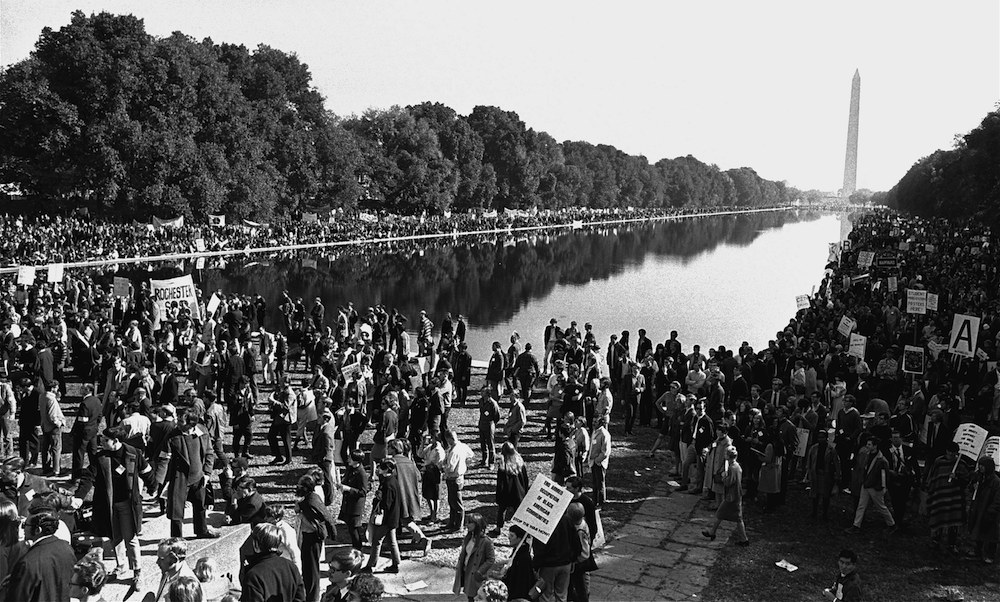 Anti-war demonstrators assemble around the reflecting pool opposite the Lincoln Memorial in Washington before the "March on the Pentagon," Oct. 21, 1967. (AP)
Anti-war demonstrators assemble around the reflecting pool opposite the Lincoln Memorial in Washington before the "March on the Pentagon," Oct. 21, 1967. (AP)
Editor’s note: Bill Zimmerman was featured in the just-concluded Ken Burns/Lynn Novick series “The Vietnam War,” shown on PBS. Zimmerman also wrote “Troublemaker: A Memoir from the Front Lines of the Sixties,” from which this essay is adapted.
When Brooklyn College anti-war leaders asked me to help recruit students for the Oct. 21, 1967, “March on the Pentagon,” I agreed. At 26, I was the youngest member of the faculty, fresh from graduate school, where I had been protesting the war in Vietnam for three years.
Chartered buses carried some 300 of us to Washington, D.C. Aboard were other experienced activists, but most of those present were going to their first protest. During the four-hour drive from New York, we staged a mobile teach-in, describing the history of the war and explaining how to handle arrests. Since the march had been denied a permit, it was illegal, and local authorities had promised to keep us from reaching the Pentagon.
By then, many Americans had protested the war, but to no avail. The carnage in Vietnam was killing thousands, and nearly every day, television footage showed United States planes dropping bombs and napalm on tiny villages. Pro-war adversaries infuriated us with mindless slogans like “My Country, Right or Wrong.” But we were also impatient with our own side, fed up with protests that had no impact on policy. Hundreds had already burned their draft cards. Like them, we were ready to move from protest to resistance.
Organizers were determined to hijack a protest rally planned for Oct. 21 at the Lincoln Memorial and turn it into a march on the Pentagon, culminating in civil disobedience. But we had no idea how many would leave the Lincoln Memorial protest and join such a march. When our buses arrived, the students disembarked into an ocean of banners and picket signs. There were large contingents from various anti-war and peace groups and a mix of students, senior citizens, pacifists, hippies and anarchists—over 100,000 in all.
Dave Dellinger, a leading pacifist, and Dr. Benjamin Spock, the famous pediatrician, spoke to the protesters. Meanwhile, I wondered how many would take the more militant step of joining our march. Then, over the heads of the crowd, I saw the first group break away and walk toward the Potomac River Bridge that led to the Pentagon. Our Brooklyn College crew joined others falling in behind them, still nervously uncertain about how many would fall in behind us.
Another large contingent moved toward the bridge holding several 25-foot banners and an array of colorful signs. They were veterans of the Abraham Lincoln Brigade, Americans who had volunteered to fight fascism during the Spanish Civil War in the late 1930s. As these aging heroes passed, thousands first cheered and then joined them, eager to pick up the torch they had carried. Soon, the march stretched all the way from the Lincoln Memorial to the Pentagon—50,000 people. That number, ready to commit civil disobedience, was unprecedented.
We marched toward what we saw as the enemy—never mind that our “enemy” was a respected American institution. To us, the Pentagon was the brain of an evil monster wantonly killing innocent people half a world away and shipping young Americans home in body bags and on wheelchairs. We burned with a desire to confront this enemy but had no real plan for what to do when we arrived at the building. Some wanted to stand in silent protest and defiance. Others were determined to ransack it. A few planned to deface its outer walls. The more whimsical spoke of “levitating” the building and “exorcising” the evil spirits inside.
We were stopped by hundreds of uniformed police and U.S. marshals just as we got to the Pentagon parking lot. In the distance, paratroopers stood shoulder to shoulder in front of the building, a human wall and last line of defense. They held rifles, many with fixed bayonets. The cops and marshals tried to keep us boxed into the parking lot. The pacifists among us, thinking they had gone as far as they could, gathered to listen to speeches condemning the war. We looked for a way around the police.
We knew the press would cover our actions and that the government was in a no-win position, even though we were certain to lose any physical confrontation. If they let us alone, the world would see 50,000 protesting Americans surrounding their own military headquarters in a time of war. Except for French students protesting the war in Algeria, nothing like that had ever happened. If they attacked us with nightsticks and rifle butts, the press would present a damaging picture of the military suppressing the U.S.’ own citizens. Either way, government authority would be undercut.
Skirmishes soon broke out between police and demonstrators. A few hundred militants carrying long poles for self-protection ran out of the parking lot and took a circuitous route toward the building. They ran into the first of two lines of temporary fencing. Immediately, they tore down a small part of the first fence, which separated the parking lot from the grounds of the Pentagon. Marshals rushed over and forced them back.
That action set the stage for the rest of us. We divided into small groups and ripped down fencing until squads of police and marshals ran up to stop us. When they did, we regrouped elsewhere and started on another section of fence. Beyond the first fence I could see the second, and beyond it the paratroopers.
Like other protesters, I was willing to engage the police and the marshals. The soldiers were another story. But we soon came to doubt they had live ammunition and realized they were merely a symbolic deterrent. The government would not risk troops firing on American citizens. A bigger public relations disaster could not be imagined.
Protesters continued to pour into the parking lot. Our numbers and determination had been underestimated. There were far too few cops and marshals to control us. When they rushed to secure one section of fencing, they inevitably left another unguarded, and with so many of us milling around and willing to fight back, the unguarded section was soon pulled down. Two hours later, our hit-and-run tactics had destroyed the first line of fencing, allowing us to move out of the massive parking lot and onto the Pentagon grounds. We pushed up to the second fence, only 100 yards from the building.
Off to the side, I caught a glimpse of a few dozen protesters making a wide flanking maneuver. They had spotted an unguarded door for reporters and cameramen on one side of the building. Marshals rushed in to block their access, but not before 10 of them had made it inside. They were quickly apprehended and thrown out. Meanwhile, others got over the second line of fencing. They were met with tear gas and the rifle butts of military police (MPs) emerging from behind the paratroopers. As thousands of us watched them being beaten, we sang “America the Beautiful.”
Moving through the chaotic scene, I picked my battles carefully, wanting to fight back but also avoid arrest or injury. Like others, I challenged the cops wherever I could and helped protesters under attack. Sections of the second fence got torn down whenever there was an opening.
These skirmishes lasted another two hours. A few at a time, hundreds of protesters were arrested and hauled away in police vans. Ironically, the most peaceful protesters were the most likely to be beaten and arrested. They were easy targets. Those of us pulling down the fences were mobile and did not stand around waiting to be apprehended.
By late afternoon, the arrests had not yet made a dent in our numbers. After prolonged clashes, we breached the second line of fencing and pushed up to the paratroopers, only 20 yards from the building. We stopped in front of them. The cops and marshals continued to wade through the crowd, making random arrests. Every time they got close to my group, we slipped away. There were still many thousands of us, but we were reluctant to move against the soldiers. They had not attacked us, and, theoretically, we were there to save their lives. We also had some concern about their bayonets.
Marshals and MPs regrouped behind the paratroopers. We sat down by the thousands on the grass or pavement directly in front of them. I was in the first row and, like others, talked to the soldiers immediately opposite me about the war and why we were there to protest it. Some were hostile, but many were simply ill at ease, unaccustomed to what they were experiencing and ambivalent about those of us confronting them.
A short distance to my right, protesters stood up and moved closer to the troops. MPs emerged from behind the paratroopers. Their rifles had no bayonets but were held at their waists, pointed up at an angle, directly at the heads of the demonstrators standing face to face with them. No one backed off.
Suddenly, a long-haired protester wearing a bulky sweater and carrying a bunch of flowers stepped forward. He pulled out a single flower and stuck the stem into the barrel of a rifle pointed directly at him. Calmly, he moved down the line of MPs and put each of his flowers into rifle barrels. This symbolic act was caught on film, and the resulting photo splashed across front pages throughout the country. It was destined to play a larger role as an enduring icon of the 1960s.
Three months before, reporters had described hippies at the “Summer of Love” in San Francisco as “flower children.” Seeing the new picture from the Pentagon, they talked of “flower power,” evoking the hippie/activist alliance opposed to the war. They used the term derisively, as though “flower” and “power” were inherently antithetical. But many of us embraced the phrase, since it symbolized freeing men from outdated norms of masculinity that emphasized control and domination. We did want to “make love, not war,” but we also wanted to use long hair and flowers to redefine manhood.
Night fell, but thousands of protesters remained. Many had to return to buses for the trip home, but I refused to leave and gave up my ride. We made bonfires, using the picket signs carried earlier as fuel. Impromptu speakers used bullhorns to urge the paratroopers to switch sides and join us, as Russian soldiers had in 1917 during the revolution. About 9 p.m., one did. A single trooper dropped his rifle, threw down his helmet and advanced into the crowd of protesters. He didn’t get far. He was seized from behind and led away. We never found out what happened to him.
Soon, I saw draft cards being burned. Many in the crowd had not yet taken this step, but in this eerie scene, with bonfires encircling the Pentagon, they found the inspiration to do so. Over 200 cards went up in smoke.
Food and blankets arrived, and I settled in for the night. I didn’t know why. It was too dark for news footage, and we had no realistic chance of getting into the building. But I could not bring myself to leave. It was only pride and egotism, but I was not going to be run off.
As the bonfires died out and the night wore on, many protesters left. Around midnight, the marshals assumed our resolve had weakened. They moved the paratroopers toward us. It was imprudent to resist, so we slowly fell back, trying to maintain discipline. Marshals pushed into the crowd and made more arrests, again using their nightsticks to viciously attack anyone who resisted. I went mobile with the tiny group that had stayed with me, and we avoided arrest, but I saw men and women beaten mercilessly.
Outraged by the brutality, I resolved to stay so that at dawn the press would see that some of us had survived. At first light, only several hundred remained, but we had escaped arrest and injury and believed we had made our point. We got up, formed a line, and marched three miles to the White House. It was early and we wanted to wake up, or at least shake up, President Lyndon Johnson. We paraded under his windows until motorcycle cops drove us off with nightsticks.
But we were there long enough to be sure Johnson heard the chant that by then had become emblematic of the anti-war movement: “Hey, hey, LBJ, how many kids did you kill today?”
Your support matters…Independent journalism is under threat and overshadowed by heavily funded mainstream media.
You can help level the playing field. Become a member.
Your tax-deductible contribution keeps us digging beneath the headlines to give you thought-provoking, investigative reporting and analysis that unearths what's really happening- without compromise.
Give today to support our courageous, independent journalists.
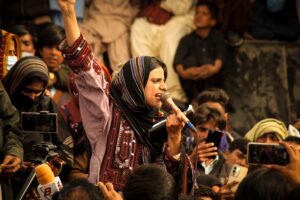
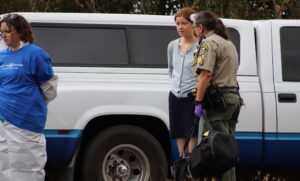

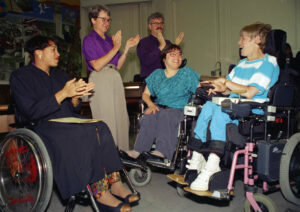

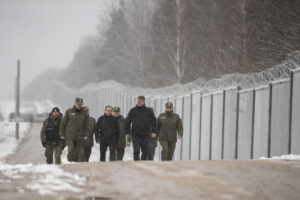
You need to be a supporter to comment.
There are currently no responses to this article.
Be the first to respond.